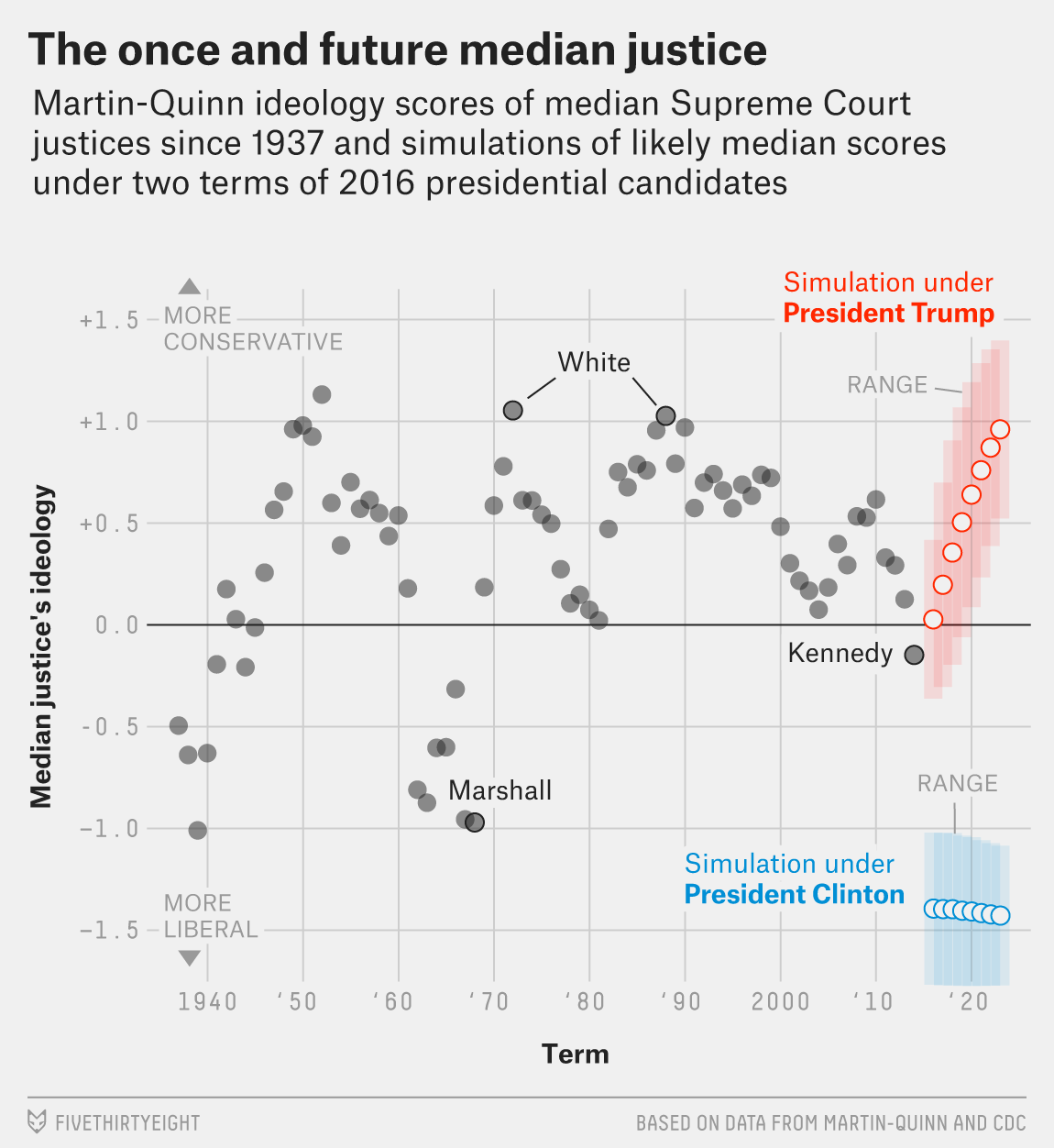During the closing weeks of the election, one graph kept popping up in my mind. It charts the ideology of the Supreme Court’s swing vote since 1940 and then projects how that ideology would likely change depending on the presidential election results.
If Hillary Clinton had become president, the graph shows, the court would have immediately taken an extreme liberal turn, becoming, by far, the most liberal Supreme Court in the graph’s recorded history. If Donald Trump were to win, the graph showed the court would gradually become quite conservative, near to its most conservative point in history if Trump were to spend eight years in office.

There was no middle ground. Why should the death of one person, seemingly so random and without warning, have such an enormous impact on the country?
Perhaps it shouldn’t. Perhaps gradually expanding the number of justices on the Supreme Court would help ensure we don’t end up in another election year where the Supreme Court is a political football.
The logic is simple: The larger the group of people, the less influence each person has. The smaller the group of people, the more likely it is that the sudden departure (through death or retirement) of one will have an outsized impact.
I’m not suggesting a ploy to pack the court with super-conservative judges while Republicans hold the White House and Senate. But Congress should consider passing a law that adds one justice starting in 2021, after the next presidential election, and then another justice in 2025, after the following election.
Even expanding the court by one is worth considering. There would be more ties, but it’s reasonable that major constitutional debates should be won by at least two votes, or with 60 percent of the court in favor.
Of course, it’s not the average ideology on the court that matters, but the median ideology — Where does the swing vote lie? Having more people on the court is likely to increase the variance on either side of the median. Instead of having four ideological extremes on either side, increased turnover on the court means more variance.
Some justices would be ideological extremes, appointed by a White House and Senate controlled by the same party. Others would be more moderate, nominated by a White House controlled by one party but confirmed by a Senate controlled by the other.
It would be interesting to see if the current justices, who are largely apolitical, would comment on this idea if Congress seriously considered it. Would they welcome it, because the diminished importance of each justice might mean they can retire more freely without worrying about the whole court swinging against their ideology? Or would they oppose it, since more justices means their relative power in court decisions is slightly diminished?
The Supreme Court is small for a reason, and it shouldn’t be expanded until it’s the size of a miniature legislature with tens and tens of justices. Too much turnover on the court would keep the Senate from doing almost anything else that’s worthwhile. But it’s worth discussing whether more justices would keep the court’s median vote closer to the center.
The stakes at the Supreme Court are almost always high. That won’t change anytime soon. So much shouldn’t hinge on the health or retirement of one person. It’s time to consider adding more justices.
Jason Russell is the contributors editor for the Washington Examiner.

